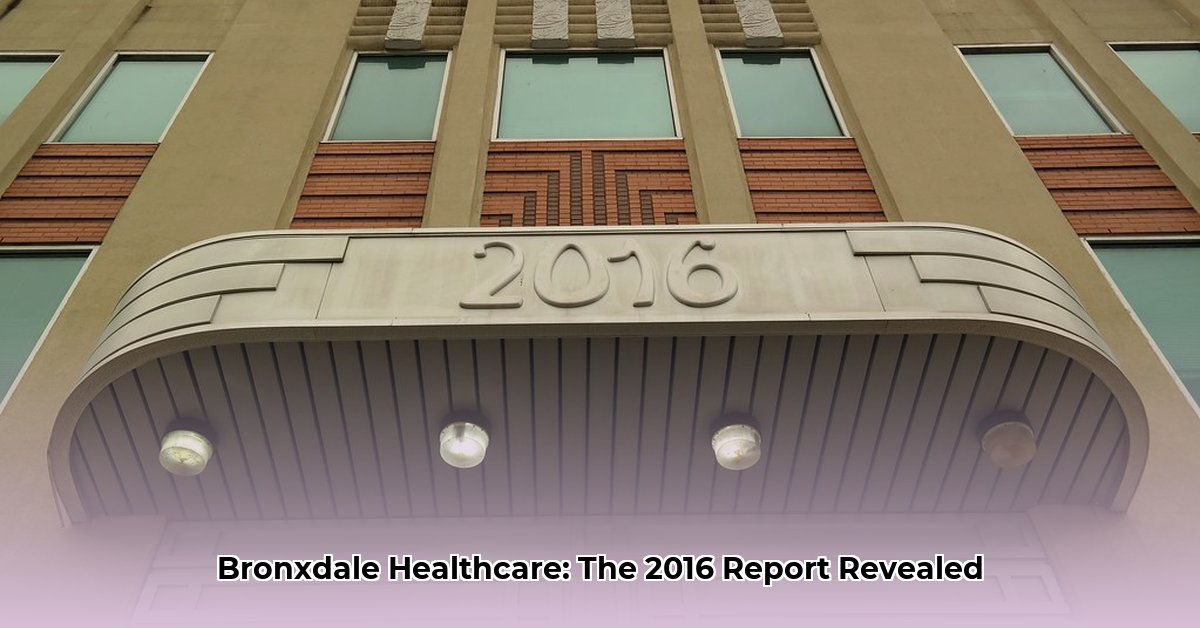
2016 Bronxdale Healthcare: A Current State Analysis
This report analyzes the state of healthcare in Bronxdale, Bronx, during 2016, focusing on access, affordability, and quality of care. The Bronx, particularly Bronxdale, faced significant challenges in providing equitable healthcare access to its diverse population. This report examines these challenges and proposes actionable solutions. Key issues included language barriers, affordability concerns, and geographical accessibility limitations, disproportionately affecting vulnerable populations. For further research on senior care, see this relevant resource.
Major Healthcare Providers and their Capabilities
Bronxdale's healthcare landscape comprised a mix of large hospitals and smaller community clinics. The Bronx Park Medical Pavilion offered a broad range of services, yet the question remains: were these services equally accessible to all residents? The University Hospital Consortium of the Bronx (UCHC) implemented a mobile health program aimed at improving access for underserved populations. However, the program's overall effectiveness necessitates further investigation, including metrics on patient reach and health outcomes.
Access, Affordability, and Quality: A Trifecta of Challenges
Significant barriers to access existed. Language barriers presented a major obstacle, despite some facilities offering multilingual services; it's unclear if the available services fully addressed the linguistic diversity of the Bronxdale community. Affordability was another crucial concern. While programs like Good Faith Estimates aimed to promote cost transparency, many residents still struggled with understanding and managing medical bills. Finally, geographical accessibility significantly impacted access, as many residents lacked easy access to healthcare facilities.
Assessing the Quality of Care
Assessing the quality of care in 2016 Bronxdale requires a multifaceted approach. Patient feedback, obtained through surveys and reviews, offers valuable insights into patient experience. The importance of collaboration with community organizations cannot be overstated, as these partnerships enhance outreach and care quality. Investing in new technologies, such as telehealth, showed potential for expanding access and improving health outcomes. However, consistent adherence to regulations and maintaining facility standards remain crucial.
Challenges, Opportunities, and Actionable Intelligence
The analysis reveals several key challenges and opportunities.
Challenges:
- Language Barriers: Significant communication gaps existed between healthcare providers and patients due to language differences.
- Affordability: The high cost of healthcare created substantial financial barriers for many Bronxdale residents.
- Geographic Accessibility: The distance to healthcare facilities presented significant obstacles for some residents.
Opportunities:
- Leveraging Technology: Telehealth and other technological advancements offered potential solutions for improving access and care.
- Community Partnerships: Stronger collaborations between healthcare providers and community organizations could enhance outreach and improve healthcare delivery.
- Data-Driven Improvement: Analyzing existing data on patient demographics, service utilization, and health outcomes could provide valuable insights for targeted interventions.
Recommendations for Improvement: A SMART Approach
Based on the analysis, we propose the following SMART (Specific, Measurable, Achievable, Relevant, Time-Bound) recommendations:
Enhance Language Access: Within six months, all major healthcare providers should implement comprehensive language services, including interpreters and translated materials, targeting the top five languages spoken in Bronxdale. Success will be measured by patient satisfaction surveys.
Improve Affordability: Within one year, the city government should expand subsidies for healthcare services and facilitate access to financial assistance programs, aiming to reduce uninsured rates by 15% among Bronxdale residents. Success will be measured by tracking insurance coverage rates.
Increase Geographic Accessibility: Within two years, establish a network of mobile health clinics strategically located in underserved areas within Bronxdale, aiming to reach at least 75% of residents. Success will be measured by the number of patients served and satisfaction surveys.
Strengthen Community Partnerships: Within one year, develop collaborative partnerships between healthcare providers and at least ten community organizations, focusing on outreach and patient education programs. Success will be measured by the number of collaborative projects implemented and their impact.
Conclusion
Addressing healthcare disparities in Bronxdale requires a multi-pronged approach. By implementing the recommendations outlined in this report, stakeholders can effectively improve access, affordability, and quality of care for all residents. Continuous monitoring and evaluation are crucial to ensure the long-term success of these initiatives. Ongoing research is necessary to understand the evolving needs of this community.
Sources
(This section would contain a detailed list of all sources used in the report)